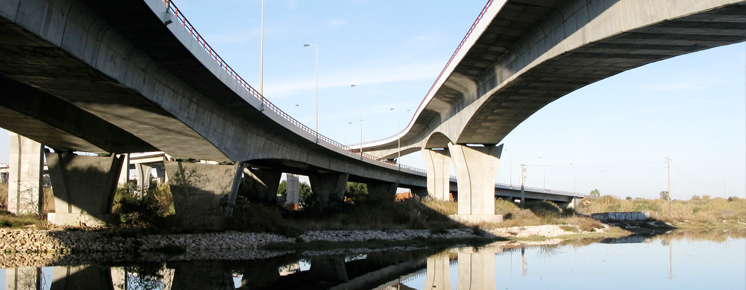
Strategies for addressing or avoiding common constraints to speed delivery of transportation planning and environmental review projects.
Expediting Project Delivery (C19)
SHRP2's Expediting Project Delivery (C19) has been integrated into the Federal Highway Administration's Environmental Review Toolkit. Get the latest information on implementation activities and tools at https://www.environment.fhwa.dot.gov/strmlng/shrp2-c19/default.asp.
Challenge
Speeding up the delivery of needed transportation projects is high on everyone’s agenda—from the traveling public who desire timely improvements to the local communities that rely on scheduled delivery of goods and services. Transportation agencies are being challenged to deliver projects with greater efficiency and speed at the same time that funding and staffing are decreasing and transportation needs are growing.
The use of innovative approaches and early coordination with resource agencies, stakeholders, and the public can help transportation agencies achieve timely project delivery as well as improved project decisions. A range of strategies is needed to address common constraints to expediting project delivery.
Solution
SHRP2 has developed a Solution for Expedited Planning and Environmental Review. The lists of constraints and strategies in the final report are not exhaustive. The strategies included are those that met specific criteria, and that could be completed within the time restrictions of the study. The research team began drafting a list of fundamental expediting themes during the initial phase of the research and refined this list as the research progressed. The six final expediting themes, with expediting strategies organized by theme, are introduced in the following sections:
- Improve public involvement and support
- Improve resource agency involvement and collaboration
- Demonstrate real commitment to the project
- Improve internal communication and coordination
- Streamline decision making
- Integrate across all phases of project delivery
The product suggests the likely effects of not addressing a constraint, categorized as low, medium, or high, and identifies multiple strategies to apply for each severity category. The solution includes a useful worksheet that allows users to quickly identify the types of issues and/or constraints that could cause delay within their project scope, and offers mitigation strategies for each constraint. that provides background and case examples.
Details on the strategies and constraints can be found in the SHRP2 report, Expedited Planning and Environmental Review of Highway Projects. Expedited Planning and Environmental Review is also incorporated into a suite of solutions located on the Beta version of Transportation for Communities: Advancing Projects through Partnerships (www.transportationforcommunities.com - formerly known as TCAPP), now known as PlanWorks: Better Planning, Better Projects. This site also includes a beta version of the Expediting Project Delivery readiness assessment tool designed to help agencies identify potential challenges to streamlining project delivery.
Benefits
This product saves time by reducing project delays while also providing innovative approaches to improve transportation planning and decision making. This product allows agencies to anticipate where delays are expected to occur and to apply tested strategies to avoid or reduce delays during all phases of project development and delivery.
Strategies to Expedite Project Delivery
- Change-control practices
- Consolidated decision council
- Context-sensitive design and solutions
- Coordinated and responsive agency involvement
- Dispute-resolution process
- Department of Transportation-funded resource agency liaisons
- Early commitment to construction funding
- Expedited internal review and decision making
- Facilitation to align expectations up front
- Highly responsive public engagement
- Incentive payments to expedite relocations
- Media relations manager
- Performance standards
- Planning and environmental linkages
- Programmatic agreement for Section 106
- Programmatic or batched permitting
- Planning-level environmental screening criteria
- Real-time collaborative interagency reviews
- Regional environmental analysis framework
- Risk management
- Strategic oversight and readiness assessment
- Team co-location
- Tiered National Environmental Policy process
- Up-front environmental commitments


